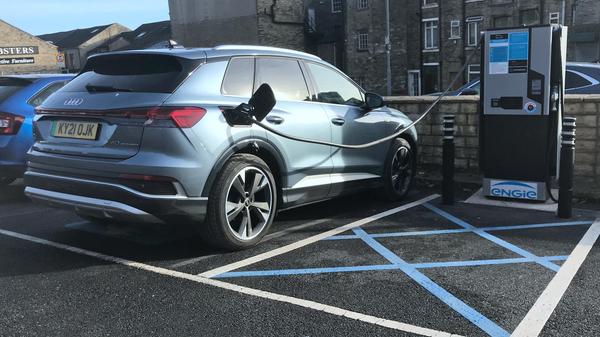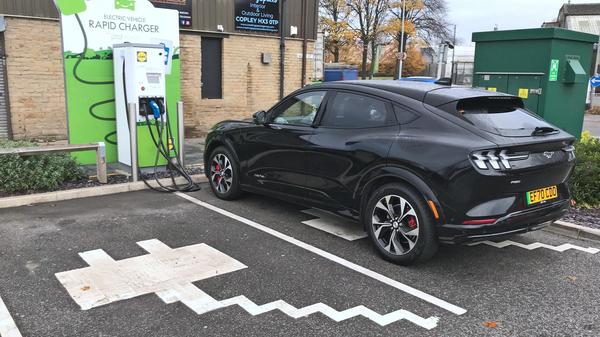Feature
Can you run an EV on public charging alone?
The infrastructure is growing all the time but can you survive on public charging? We’ve been putting in the electric miles to try and find out
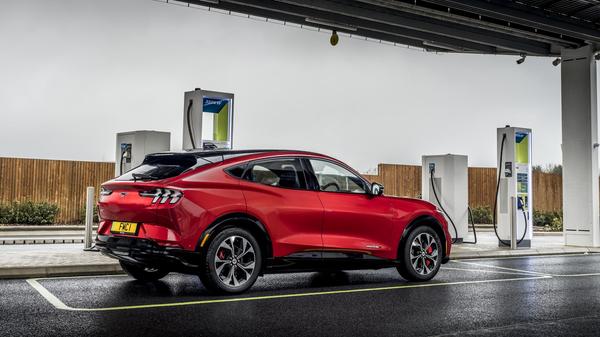

Words by: Dan Trent
Published on 22 February 2022 | 0 min read
Home charging is the key to unlocking the true convenience and cost-saving potential in any electric car. But if you don’t have the luxury of a driveway or off-street parking for installing your own power point, is the switch to electric still viable?
In the course of testing EVs like the Ford Mustang Mach-E, Audi Q4 E-Tron and BMW iX over the last couple of months we’ve also explored whether you really can live with an EV when you don’t have the option of charging at home. Here’s what we learned. Skip to: What is the charging infrastructure like locally? Charging apps explained Public charging costs Public charging good and bad The bottom line (and further reading)
In the course of testing EVs like the Ford Mustang Mach-E, Audi Q4 E-Tron and BMW iX over the last couple of months we’ve also explored whether you really can live with an EV when you don’t have the option of charging at home. Here’s what we learned. Skip to: What is the charging infrastructure like locally? Charging apps explained Public charging costs Public charging good and bad The bottom line (and further reading)
What is the charging infrastructure like locally?
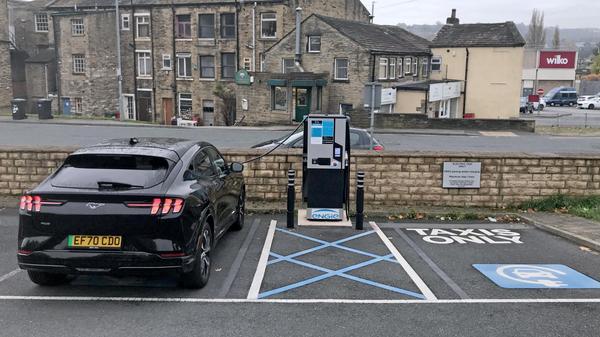
Availability of public charging points varies hugely in different parts of the country, so it pays to research the situation where you live. London has the highest proportion of cars to chargers, while the east of England, the north-west and Yorkshire are among the poorest. According to a recent survey by industry body the SMMT increasing take-up for plug-in cars means the ratio of EVs to charge points has got worse since 2019, too.
Halifax in West Yorkshire (where we tested these cars) is a typical example. It’s a sizeable town but only has three charging points in the centre, located in local authority car parks with a single DC plug and time restrictions on how long you can charge. Make that two charging points, given at the time of writing one is behind the council’s winter supply of salt and currently inaccessible. A vast retail park not far away meanwhile has just three charging points among its 600-plus parking spaces, these tucked in the corner of Ikea’s underground car park and always in demand. Other options are limited to a single 3kW supply at Sainsbury’s (no better than plugging into a domestic socket) while a new bank of points at the local shops is still not operational, despite having been installed months ago. Contrast this with London, where the Source network currently has 1,700 kerb-side chargers. These offer residents on a membership scheme discounted rates and other benefits and are supposed to work for visitors as well, though we couldn’t connect when we tried and the charging speeds are slow. Many EV owners we chatted with swear by an app called Zap-Map, which not only tells you where chargers are but also advises of whether they’re occupied or broken, how much power you can expect and which network they’re on. Many electric cars have similar information in their navigation, fancier connected systems like that in the BMW even telling you how long each one will take to top up the battery at its current state of charge so you can pick the right point for your needs. Whichever you use, the goal here is to use the information to help plan any stops you may need to complete a longer journey and use the live info (where provided) to avoid wasted trips to chargers that are busy or out of order. The operator info meanwhile means you can check you have the right app and payment details to save time when plugging in. Read more: Charging an electric car Back to top
Halifax in West Yorkshire (where we tested these cars) is a typical example. It’s a sizeable town but only has three charging points in the centre, located in local authority car parks with a single DC plug and time restrictions on how long you can charge. Make that two charging points, given at the time of writing one is behind the council’s winter supply of salt and currently inaccessible. A vast retail park not far away meanwhile has just three charging points among its 600-plus parking spaces, these tucked in the corner of Ikea’s underground car park and always in demand. Other options are limited to a single 3kW supply at Sainsbury’s (no better than plugging into a domestic socket) while a new bank of points at the local shops is still not operational, despite having been installed months ago. Contrast this with London, where the Source network currently has 1,700 kerb-side chargers. These offer residents on a membership scheme discounted rates and other benefits and are supposed to work for visitors as well, though we couldn’t connect when we tried and the charging speeds are slow. Many EV owners we chatted with swear by an app called Zap-Map, which not only tells you where chargers are but also advises of whether they’re occupied or broken, how much power you can expect and which network they’re on. Many electric cars have similar information in their navigation, fancier connected systems like that in the BMW even telling you how long each one will take to top up the battery at its current state of charge so you can pick the right point for your needs. Whichever you use, the goal here is to use the information to help plan any stops you may need to complete a longer journey and use the live info (where provided) to avoid wasted trips to chargers that are busy or out of order. The operator info meanwhile means you can check you have the right app and payment details to save time when plugging in. Read more: Charging an electric car Back to top
Charging apps explained
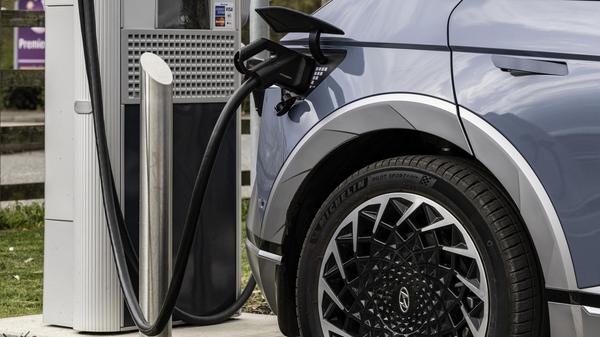
Given you can pay for petrol or diesel in seconds with a swipe of a bank card you’d think electric car charging should be just as quick and easy. But while more charging points accept contactless payment you’ll still find most require a phone app, with the associated faff of creating an account, registering your payment details, setting a password and the rest. Once it’s done it should be done, though in our experience travelling somewhere unfamiliar typically meant registering with yet another new provider, usually in the corner of a dark car park somewhere and trying to tap details into a phone with cold fingers. Not ideal.
Many car manufacturers and charging networks make it a bit easier and offer combined accounts with a single payment card that works across various suppliers and, on a subscription model, can make charging cheaper. This can take some of the stress out of it but from malfunctioning apps to understaffed helplines that only work in office hours we still encountered a lot of frustrating issues. And it’s all heavily dependent on your phone having charge and signal. Unless you own a Tesla, of course. The brand’s Supercharger network is second-to-none and owners we spoke with expressed total confidence in being able to do long trips safe in the knowledge they’d never be far away from a charger, or face a queue to use one. Read more: Charging an electric car on the public network Back to top
Many car manufacturers and charging networks make it a bit easier and offer combined accounts with a single payment card that works across various suppliers and, on a subscription model, can make charging cheaper. This can take some of the stress out of it but from malfunctioning apps to understaffed helplines that only work in office hours we still encountered a lot of frustrating issues. And it’s all heavily dependent on your phone having charge and signal. Unless you own a Tesla, of course. The brand’s Supercharger network is second-to-none and owners we spoke with expressed total confidence in being able to do long trips safe in the knowledge they’d never be far away from a charger, or face a queue to use one. Read more: Charging an electric car on the public network Back to top
Public charging costs
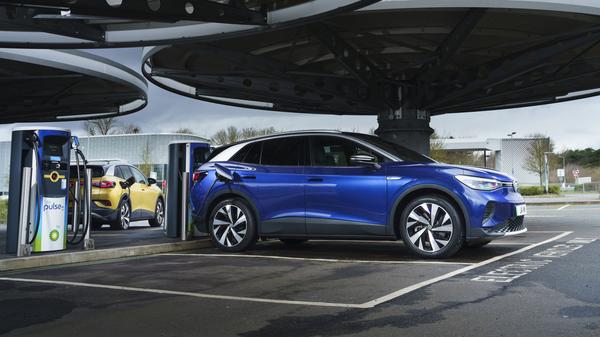
Charge at home and you could pay as little as a few pence for each kWh you put in your battery. But, just like petrol and diesel, out on the road prices vary enormously and you’ll pay premium for the convenience of rapid DC charging on the motorway. Frequent travels south in cold weather meant the range of our test cars couldn’t quite do Yorkshire to London on a single charge, the handy charging station just off the M1 at Milton Keynes bus station a regular stop. But an expensive one. We paid a premium 69p per kWh with Ionity, even with the charger only delivering a fraction of the maximum 350kW.
Though the app running them was a bit flaky GeniePoint chargers in our local authority car parks were a bit better at 42p per kWh, prompting a comparison with the petrol powered Mazda3 long-termer we’ve been running. 4kWh at £1.68 would be good for about 11 miles of range at the Mustang Mach-E’s real-world efficiency; a litre of petrol at the same £1.68 would get you about 10 miles in the Mazda. You can find cheaper on public chargers but at that kind of money an EV without home charging is potentially little cheaper in cost per mile terms than an efficient petrol, diesel or hybrid. That’s not to say it can’t be. But you may need to do your research first. Read more: Electric car batteries explained Back to top
Though the app running them was a bit flaky GeniePoint chargers in our local authority car parks were a bit better at 42p per kWh, prompting a comparison with the petrol powered Mazda3 long-termer we’ve been running. 4kWh at £1.68 would be good for about 11 miles of range at the Mustang Mach-E’s real-world efficiency; a litre of petrol at the same £1.68 would get you about 10 miles in the Mazda. You can find cheaper on public chargers but at that kind of money an EV without home charging is potentially little cheaper in cost per mile terms than an efficient petrol, diesel or hybrid. That’s not to say it can’t be. But you may need to do your research first. Read more: Electric car batteries explained Back to top
Public charging good and bad
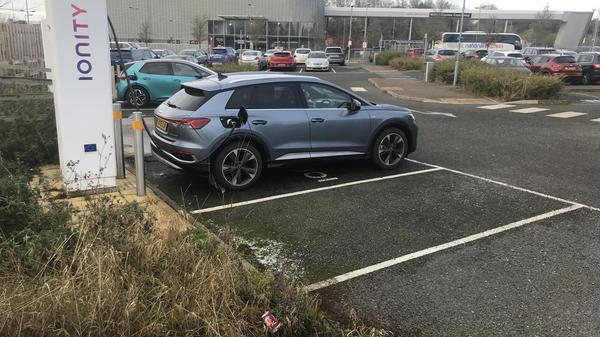
Remember that charging point at Milton Keynes? It’s fast and convenient. But located in an unlit corner of a dark car park, with the only facilities a walk away at the bus station and an annoying 30p charge to use the toilets. Hardly living the EV dream of relaxing with a flat white in a nice cafe while your car charges, and a potentially intimidating place to be hanging out after dark with an expensive car tethered to a post – especially for lone female drivers. On our travels we’ve encountered other charging points beside stinking bins round the back of grimy filling stations, or a stomp across muddy grass and a busy truck park from the shop and toilets.
Dedicated electric ‘filling stations’ with places to do a quick shop or grab a coffee are slowly appearing around the country but the reality on the motorway network is squabbling over the handful of working chargers with PHEV drivers, and paying through the nose once you do plug in. Careful scrutiny of Zap-Map will uncover more attractive places to charge, like the Osprey points at Marston’s pubs where you can recharge over a plate of grub while the car does the same in the car park. Supermarket charging (sometimes available for free) is another handy way of working a top-up into your regular routine but beware of shops that restrict access to opening times only, or expect you to prove you’re a customer. Some even dish out tickets if you charge out of hours when the store itself is shut. Read more: How to charge an electric car when you don’t have off-street parking Back to top
Dedicated electric ‘filling stations’ with places to do a quick shop or grab a coffee are slowly appearing around the country but the reality on the motorway network is squabbling over the handful of working chargers with PHEV drivers, and paying through the nose once you do plug in. Careful scrutiny of Zap-Map will uncover more attractive places to charge, like the Osprey points at Marston’s pubs where you can recharge over a plate of grub while the car does the same in the car park. Supermarket charging (sometimes available for free) is another handy way of working a top-up into your regular routine but beware of shops that restrict access to opening times only, or expect you to prove you’re a customer. Some even dish out tickets if you charge out of hours when the store itself is shut. Read more: How to charge an electric car when you don’t have off-street parking Back to top
The bottom line
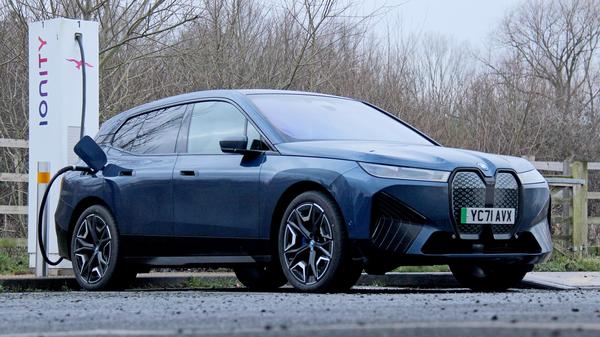
It’s clear the local situation – and local knowledge – will inform whether running an electric car on the public network alone works out as a good deal for you. So, researching the infrastructure where you live would be sensible before committing to a new EV if you can’t charge it at home.
If you only cover short distances and you’re lucky enough to have a charger-equipped workplace, gym, supermarket or other regular stop then topping up as go could make that electric car work for you. If you regularly drive longer distances in anything but a Tesla you may need to think a little harder about whether it all adds up, and perhaps stick with a plug-in hybrid for now. If you choose to take the plunge, rest assured there is a vibrant and clued-up community on your preferred social media channel with tips, hacks and advice from those who’ve been around the electric block a few times already. The situation is changing all the time too, the new breed of electric filling stations, increasing numbers of kerb-side points and community sharing apps like Co Charger all increasing the options for those who can’t top up an EV at home. Want to know more? For more tips on living with an electric car see the links below. Read more: Best electric cars Electric vehicle terms explained Charging at home Driving long distances in an EV Back to top
If you only cover short distances and you’re lucky enough to have a charger-equipped workplace, gym, supermarket or other regular stop then topping up as go could make that electric car work for you. If you regularly drive longer distances in anything but a Tesla you may need to think a little harder about whether it all adds up, and perhaps stick with a plug-in hybrid for now. If you choose to take the plunge, rest assured there is a vibrant and clued-up community on your preferred social media channel with tips, hacks and advice from those who’ve been around the electric block a few times already. The situation is changing all the time too, the new breed of electric filling stations, increasing numbers of kerb-side points and community sharing apps like Co Charger all increasing the options for those who can’t top up an EV at home. Want to know more? For more tips on living with an electric car see the links below. Read more: Best electric cars Electric vehicle terms explained Charging at home Driving long distances in an EV Back to top
